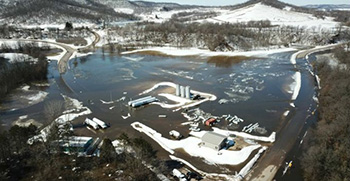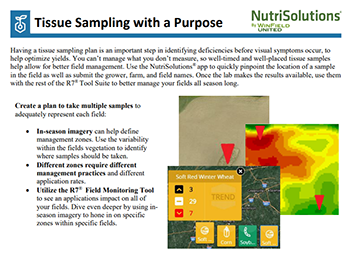Challenging Year of 2019 Brings Takeaways
Feb 03, 2020

We faced many challenges in 2019. Historic flooding, late planting dates and a harvest that seemed to never end to name a few. If there’s anything that can be learned in a year like this one, it’s the power of perseverance. Here are three key takeaways that could help influence your decisions as you plan for next season.

2019 will be a memorable year for most farmers, even if it was for all the wrong reasons. Looking ahead, you can certainly apply this year’s learnings to your management strategy for next season. Your Premier Agronomist is available to help you solidify your plans to capitalize on opportunities and mitigate risk. Work with them to pick the best genetics for your farm and implement technology for in season crop management. Thank you for your past business and we look forward to serving you in 2020.
Ken Jahnke | Agronomy Division Sales Manager

1. It paid to have a backup plan
One thing that stands out is the unpredictability of 2019. It started early in the season. You wondered when to fertilize. When would it stop raining? When should planting begin? What would the yield potential of the crops be if they went in late? Struggling with these questions we used our best judgment to make in-season decisions. In some cases, conditions made it impossible to stick with management plans and created more challenges for protecting yield potential. Farmers who didn’t give up on their crops and had contingency plans for management tended to see the benefits at harvest. Looking ahead to 2020, allow yourself some flexibility to make in-season changes to help manage unpredictable conditions.2. Modern genetics are resilient
Despite the environmental condition’s crops faced, many farmers were surprised at the yields they saw at the end of the season. Every year we’re seeing advances in corn hybrids that make them more tolerant to stress. If you’re paying a premium for the latest seed genetics, this year showed us that it makes sense to manage them through the season, even when conditions seem unfavorable for decent yield. Modern genetics have resiliency when they’re given what they need.3. Modeling tools proved their value
In a year with so much unpredictability, relying on your gut instinct to make decisions may not have been the best strategy. Ag technology and modeling tools certainly helped farmers make more confident in-season management decisions, especially when they were forced to make adjustments to their original plans. For example, farmers who used the R7® Field Monitoring and Field Forecasting Tools were able to monitor conditions in their fields in real-time to predict how much nitrogen was available to the growing crop. That information was useful to help guide when and how much in-season nitrogen farmers added.
2019 will be a memorable year for most farmers, even if it was for all the wrong reasons. Looking ahead, you can certainly apply this year’s learnings to your management strategy for next season. Your Premier Agronomist is available to help you solidify your plans to capitalize on opportunities and mitigate risk. Work with them to pick the best genetics for your farm and implement technology for in season crop management. Thank you for your past business and we look forward to serving you in 2020.
Ken Jahnke | Agronomy Division Sales Manager
